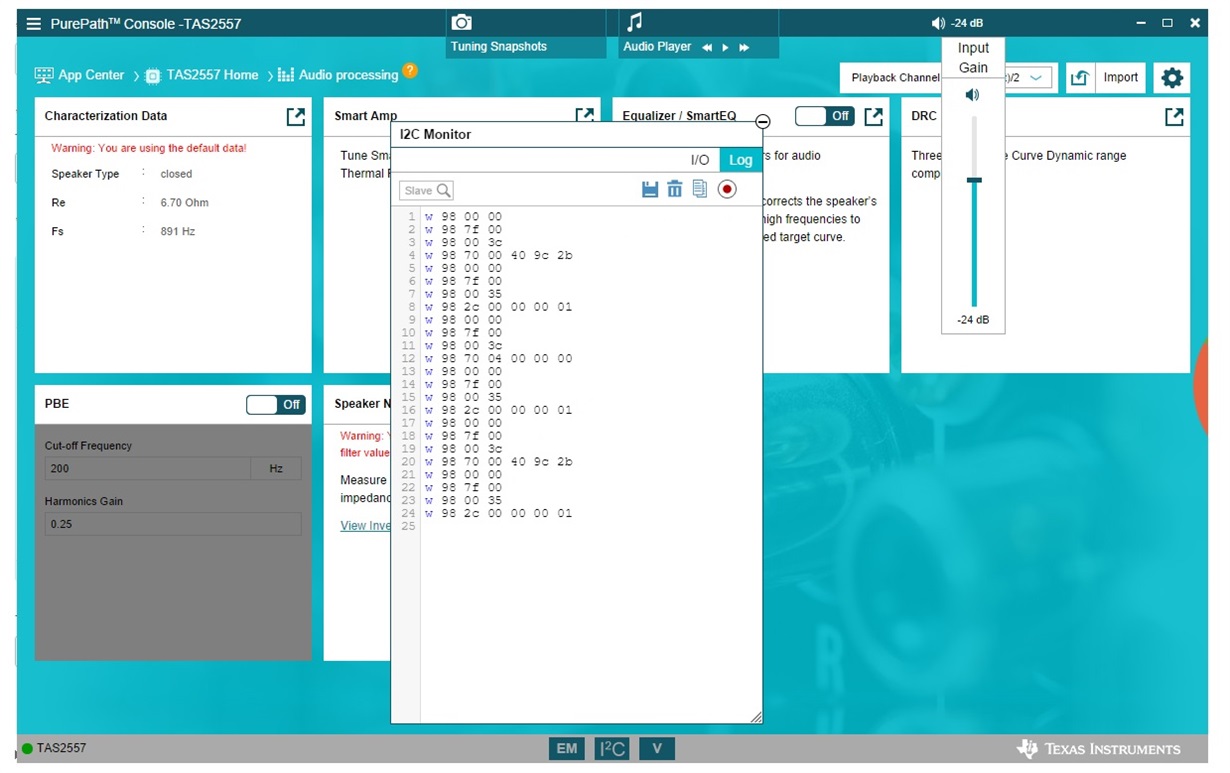I use the EVM board to debug.
I connect the EVM , and open the Audio processing page of PPC3 tool, It will auto download some cfg,
then I try to adjust the gain, it can work normally.
Then I download the " combined_configuration_0_ROMMode1_48KHz.cfg " to put the TAS2557 into ROM Mode 1,
and use the IIC cmds generated before to adjust the gain, but it does not work, the audio gain has no change.
The IIC cmds generated in the Audio processing page of PPC3 tools seems have no effect to adjust the aduio gain in ROM Mode 1.
Why?
But I have find that I can directly wirte to the SPK_GAIN_EDGE reg to adjust the output audio Gain.
And also how can I adjust the EQ?




